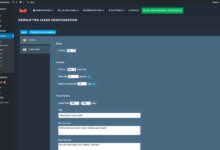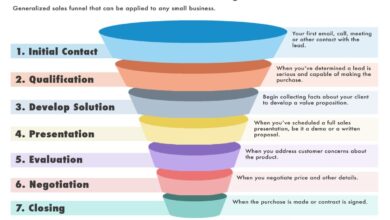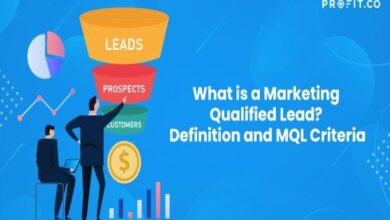Conversion Rate: 7 Proven Strategies to Skyrocket Your Results
Want to turn more visitors into customers? It all starts with mastering your conversion rate. This one metric can make or break your online success—and we’re diving deep into how to boost it effectively.
What Is Conversion Rate and Why It Matters

The term conversion rate might sound technical, but it’s actually simple: it’s the percentage of visitors who take a desired action on your website. Whether it’s making a purchase, signing up for a newsletter, or downloading an ebook, every action counts as a conversion. The higher your conversion rate, the more effective your site is at turning traffic into results.
Defining Conversion Rate in Simple Terms
At its core, conversion rate is calculated by dividing the number of conversions by the total number of visitors, then multiplying by 100 to get a percentage. For example, if 1,000 people visit your site and 50 make a purchase, your conversion rate is 5%. This basic formula applies across industries and platforms.
- Conversion = Any action that aligns with your business goal
- Rate = Percentage of users completing that action
- Formula: (Conversions ÷ Total Visitors) × 100
Understanding this metric helps you measure performance beyond just traffic numbers. A high volume of visitors means little if none are converting.
Why Conversion Rate Is a Key Performance Indicator (KPI)
Unlike vanity metrics like page views or bounce rate, conversion rate directly reflects business outcomes. It tells you whether your marketing, design, and messaging are working together to drive action. According to Shopify, the average e-commerce conversion rate hovers around 1.8% to 3.7%, meaning most sites leave significant revenue on the table.
“Your website’s conversion rate is the heartbeat of your digital strategy.” — Neil Patel, Digital Marketing Expert
Improving your conversion rate doesn’t just increase sales—it also reduces customer acquisition costs. If you can convert more of your existing traffic, you don’t need to spend as much to attract new visitors.
How to Calculate Your Conversion Rate Accurately
While the math behind conversion rate is straightforward, accuracy depends on correctly defining what counts as a conversion and tracking it properly. Many businesses miscalculate because they overlook multi-step funnels or fail to segment data.
The Basic Conversion Rate Formula
The standard formula is:
Conversion Rate = (Number of Conversions ÷ Total Number of Visitors) × 100
For instance, if your landing page receives 10,000 visits in a month and 400 users sign up for your free trial, your conversion rate is 4%. This number gives you a baseline to measure improvement over time.
However, this simplicity can be deceptive. You must ensure that your tracking tools—like Google Analytics or HubSpot—are set up to capture conversions accurately. Misconfigured goals or missing UTM parameters can skew results.
Advanced Calculation: Multi-Touch Attribution Models
In real-world scenarios, customers often interact with multiple touchpoints before converting. A user might see a Facebook ad, read a blog post, then return via email to make a purchase. Traditional last-click attribution credits only the final touchpoint, potentially undervaluing earlier efforts.
- Last-Click Model: Attributes conversion to the final interaction
- First-Click Model: Credits the initial touchpoint
- Linear Model: Distributes credit equally across all touchpoints
- Time-Decay Model: Gives more weight to interactions closer to conversion
Using advanced models helps you understand which channels contribute most to your conversion rate, allowing for smarter budget allocation. Tools like Google Analytics 360 offer robust attribution reporting.
Industry Benchmarks for Conversion Rate
Knowing your own conversion rate is useful, but context matters. How does your rate compare to others in your industry? Benchmarks help you set realistic goals and identify areas for improvement.
E-Commerce Conversion Rates by Sector
E-commerce businesses vary widely in performance. According to Statista, the global average e-commerce conversion rate was 2.63% in 2023. However, top performers achieve 5% or higher.
- Fashion & Apparel: ~2.5%
- Electronics: ~1.8%
- Health & Beauty: ~3.2%
- Luxury Goods: ~4.1%
These differences stem from factors like product pricing, trust signals, and checkout complexity. High-ticket items often have lower conversion rates due to longer decision cycles.
SaaS and Lead Generation Benchmarks
For SaaS companies and service providers, conversion rate often refers to lead generation—such as free trial signups or demo requests. HubSpot reports that the average landing page conversion rate for lead generation is around 5.31%, but top quartile performers exceed 11%.
Key factors influencing these rates include:
- Clarity of value proposition
- Form length and field requirements
- Trust indicators (testimonials, security badges)
- Mobile responsiveness
Understanding where you stand relative to industry standards is crucial for setting achievable optimization goals.
Top 7 Factors That Influence Conversion Rate
Many elements affect how visitors behave on your site. Some are obvious, like page speed; others are subtle, like color psychology. Here are seven proven factors that directly impact your conversion rate.
Website Design and User Experience (UX)
A clean, intuitive design guides users toward conversion. Cluttered layouts, confusing navigation, or inconsistent branding create friction. According to research by Nielsen Norman Group, every second of delay in page load time increases bounce rates by up to 32%.
- Use whitespace effectively to reduce cognitive load
- Ensure visual hierarchy leads users to key actions
- Keep navigation simple and consistent across pages
UX isn’t just about aesthetics—it’s about removing barriers between the user and their goal.
Page Speed and Mobile Optimization
Google reports that 53% of mobile site visits are abandoned if pages take longer than three seconds to load. Slow performance kills conversion rate, especially on mobile devices where users expect instant results.
Optimization tips:
- Compress images without sacrificing quality
- Minify CSS, JavaScript, and HTML
- Leverage browser caching
- Use a Content Delivery Network (CDN)
Tools like Google PageSpeed Insights provide actionable recommendations to improve speed and usability.
Compelling Copywriting and Value Proposition
Your words matter. A strong headline, clear benefits, and persuasive language can dramatically increase conversions. The value proposition—the reason someone should choose you—must be visible within seconds of landing.
“People don’t buy products; they buy better versions of themselves.” — Seth Godin
Effective copy focuses on outcomes, not features. Instead of saying “Our software has AI-powered analytics,” say “Save 10 hours a week with smart insights that predict customer behavior.”
- Focus on pain points and solutions
- Use power words like “proven,” “instant,” “guaranteed”
- Keep sentences short and scannable
Proven Tactics to Improve Your Conversion Rate
Now that you understand the key drivers, let’s explore actionable strategies to boost your conversion rate. These methods are backed by data and used by top marketers worldwide.
Optimize Landing Pages for Maximum Impact
Landing pages are conversion machines when done right. They should have one goal: get the visitor to take a specific action. Distractions like navigation menus or unrelated links reduce focus.
Best practices:
- Use a single, clear call-to-action (CTA)
- Include social proof (reviews, logos, testimonials)
- Highlight urgency or scarcity (“Only 3 spots left!”)
- Match ad messaging to landing page content (message match)
A/B testing different versions can reveal what resonates best. For example, Unbounce found that changing a CTA button from green to red increased conversions by 21%.
Implement A/B Testing and Multivariate Experiments
You can’t improve what you don’t measure. A/B testing allows you to compare two versions of a page to see which performs better. Multivariate testing goes further by testing multiple elements simultaneously (e.g., headline, image, CTA).
Steps to run effective tests:
- Identify a hypothesis (e.g., “Changing the CTA text will increase clicks”)
- Use tools like Google Optimize or Optimizely
- Ensure statistical significance before declaring a winner
- Run tests for at least one full business cycle
Even small changes—like using first-person pronouns (“I want my free guide”)—have been shown to increase form submissions by up to 90%, according to ConversionXL.
Leverage Social Proof and Trust Signals
Humans are social creatures. We look to others to guide our decisions. Including customer reviews, trust badges, media mentions, or user counters (“Join 50,000+ marketers”) builds credibility.
Types of social proof:
- Expert endorsements
- User testimonials with photos
- Star ratings and reviews
- Security seals (SSL, payment logos)
One study showed that adding trust badges to a checkout page increased conversions by 32%. Don’t underestimate the power of perceived legitimacy.
The Role of Personalization in Boosting Conversion Rate
One-size-fits-all marketing is outdated. Today’s consumers expect personalized experiences. Personalization uses data to tailor content, offers, and recommendations to individual users—dramatically improving conversion rate.
Dynamic Content Based on User Behavior
By tracking user actions—like pages visited, time spent, or items viewed—you can serve relevant content. For example, showing recently viewed products or recommending complementary items increases engagement.
Examples of dynamic content:
- Personalized homepage banners
- Product recommendations (“Customers like you also bought…”)
- Behavioral email triggers (abandoned cart reminders)
According to McKinsey, personalization can reduce acquisition costs by up to 50% while increasing revenues by 5-15%.
Geolocation and Device-Based Targeting
Where a user is and what device they’re on provides valuable context. A mobile user near your store might respond well to a “Visit Today” CTA with directions. Someone browsing at night may prefer a “Schedule a Call” option over an immediate purchase.
- Display local inventory or store hours
- Adjust form fields based on location (e.g., pre-fill country)
- Optimize layout for mobile vs. desktop
Personalization isn’t invasive when done right—it’s helpful. And when it feels relevant, conversion follows.
Common Conversion Rate Optimization (CRO) Mistakes to Avoid
Even experienced marketers make errors that hurt their conversion rate. Recognizing these pitfalls can save you time, money, and missed opportunities.
Ignoring Mobile Users
Over 60% of global web traffic comes from mobile devices. Yet, many sites still aren’t optimized for smaller screens. Tiny buttons, unresponsive layouts, and slow loading times frustrate mobile users.
Fix it by:
- Using responsive design frameworks
- Testing on real devices, not just emulators
- Simplifying forms with autofill and large input fields
Google’s mobile-first indexing means your mobile experience now directly impacts SEO and visibility.
Overloading Pages with Pop-Ups
While pop-ups can capture leads, too many—or poorly timed ones—drive users away. The FTC and Google have cracked down on intrusive interstitials, especially on mobile.
“Interruption is the enemy of conversion.” — Peep Laja, Founder of ConversionXL
Best practices:
- Use exit-intent pop-ups instead of immediate ones
- Limit to one per session
- Offer real value (discount, free guide)
Timing and relevance matter more than frequency.
Failing to Analyze User Behavior Data
Many businesses guess what’s wrong instead of looking at the data. Heatmaps, session recordings, and funnel analysis reveal exactly where users drop off.
Tools to use:
- Hotjar – Visualize clicks, scrolls, and movement
- Crazy Egg – Heatmap and A/B testing
- FullStory – Session replay and frustration detection
One company discovered that a broken “Add to Cart” button was causing a 20% drop-off—something only visible through session recordings.
Tools and Technologies to Track and Improve Conversion Rate
You can’t optimize what you can’t measure. The right tools give you visibility into user behavior, performance metrics, and testing capabilities—all essential for improving conversion rate.
Google Analytics and Google Optimize
Google Analytics remains the gold standard for tracking website performance. Set up goals and funnels to monitor conversion paths. With Google Optimize (now part of GA4), you can run A/B tests and personalize content without heavy coding.
- Create custom reports for conversion tracking
- Set up event tracking for button clicks, form submissions
- Use audience segmentation to analyze behavior
Integration with Google Ads allows for closed-loop reporting—seeing which campaigns drive actual conversions.
Heatmap and Session Recording Tools
Numbers tell part of the story, but visuals reveal the rest. Heatmaps show where users click, scroll, and hover. Session recordings let you watch real interactions.
Benefits:
- Identify “dead zones” where users ignore content
- See if CTAs are being missed
- Discover usability issues on specific devices
Hotjar, for example, helped a SaaS company realize that users were trying to click a non-clickable image—leading them to redesign the interface and boost conversions by 18%.
CRM and Marketing Automation Platforms
Tools like HubSpot, ActiveCampaign, and Salesforce connect website behavior to customer journeys. They track leads from first visit to sale, enabling personalized follow-ups that improve conversion over time.
- Trigger emails based on page visits
- Score leads based on engagement
- Align sales and marketing data
Automation ensures no lead falls through the cracks—and nurtures them toward conversion.
Future Trends in Conversion Rate Optimization
The digital landscape is evolving fast. AI, voice search, and immersive experiences are reshaping how users interact with brands. Staying ahead means adapting your conversion rate strategy to emerging trends.
Artificial Intelligence and Predictive Analytics
AI is revolutionizing CRO by predicting user intent and automating personalization. Machine learning models analyze vast datasets to recommend optimal layouts, offers, and timing.
Examples:
- Dynamic pricing based on user profile
- AI-generated copy variations for A/B tests
- Predictive chatbots that assist before users ask
Platforms like Adobe Sensei and IBM Watson are already integrating AI into marketing workflows.
Voice Search and Conversational Interfaces
With the rise of smart speakers and voice assistants, more users are searching by speaking. This changes how content is discovered and consumed—requiring natural language optimization and faster responses.
Implications for conversion:
- Optimize for long-tail, question-based queries
- Ensure your site is structured for voice-friendly answers
- Design conversational CTAs (“Tell me more about pricing”)
Brands that adapt early will capture voice-driven conversions before competitors.
Immersive Experiences: AR, VR, and 3D Product Views
Augmented reality (AR) lets users “try before they buy.” IKEA’s app allows customers to visualize furniture in their homes. Warby Parker lets users “try on” glasses via smartphone camera.
Impact on conversion:
- Reduces uncertainty and returns
- Increases engagement time
- Builds emotional connection with products
Studies show AR experiences can increase conversion rates by up to 40%, according to Forrester Research.
What is a good conversion rate?
A “good” conversion rate varies by industry. While the average e-commerce rate is around 2-3%, top performers achieve 5% or higher. For lead generation, 5-10% is strong. Focus on improving your own baseline rather than chasing arbitrary benchmarks.
How often should I run A/B tests?
There’s no fixed schedule. Run tests whenever you have a clear hypothesis and enough traffic to reach statistical significance—typically 1,000+ visitors per variation. Continuous testing is ideal for high-traffic sites.
Does SEO affect conversion rate?
Yes. High-quality SEO brings targeted traffic—users actively searching for your product or service. These visitors are more likely to convert than random traffic. Plus, SEO best practices (fast load times, mobile optimization) also improve user experience and CRO.
Can I improve conversion rate without increasing traffic?
Absolutely. In fact, optimizing conversion rate is often more cost-effective than acquiring more traffic. By converting a higher percentage of existing visitors, you maximize ROI from current marketing efforts.
What’s the difference between conversion rate and click-through rate (CTR)?
CTR measures how often people click a link (e.g., from an ad or email), while conversion rate measures how many of those clicks result in a desired action (like a purchase). CTR gets attention; conversion rate gets results.
Conversion rate is more than just a number—it’s a reflection of how well your business connects with its audience. From understanding the basics to leveraging cutting-edge AI tools, every step you take to improve this metric amplifies your growth. The strategies outlined here—optimizing design, personalizing experiences, avoiding common mistakes, and embracing future trends—form a comprehensive roadmap for sustainable success. Start small, test often, and let data guide your decisions. Because when you boost your conversion rate, you’re not just increasing sales—you’re building a smarter, more responsive business.
Further Reading:









